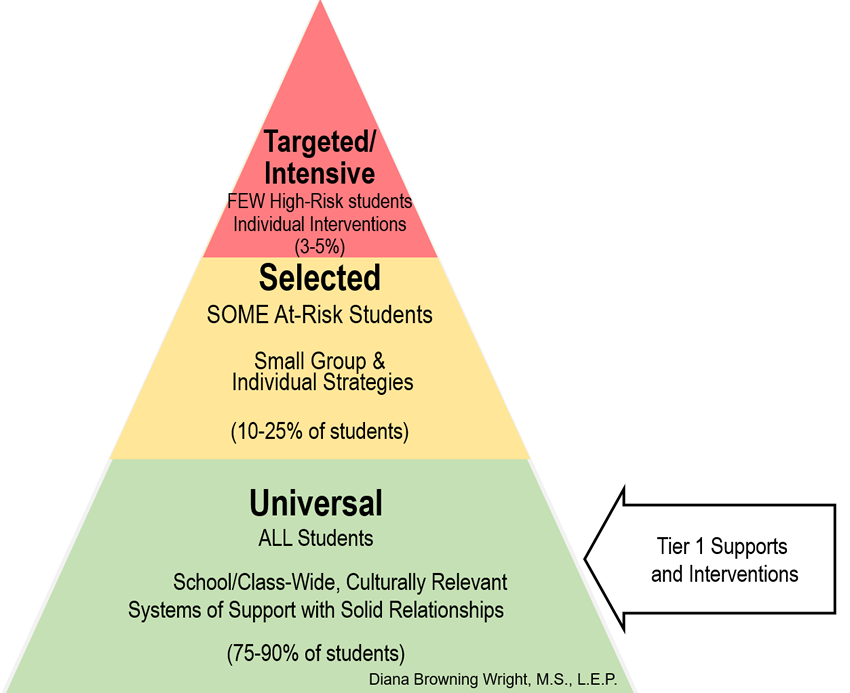
What is Tiered Instruction/Intervention?
Tier 1 – Universal or primary – Majority of students (75-90%)
As the largest tier, and the foundation for the entire framework, Tier 1 encompasses the entire school with core instructions and basic interventions. This structure helps to build positive relationships between staff and students. It includes proactive classroom management strategies aimed at creating a supportive atmosphere. Students who do not respond to these interventions may move into Tier 2.

Tier 2 – Secondary – Small groups of students (10-25%)
Tier 2 interventions are provided for the 10-25% of students who require support in addition to universal Tier 1 supports. These students are at risk of requiring more intense academic, social, emotional, or behavioral challenges, which if not addressed, could eventually require more intensive Tier 3 interventions.
Tier 2 interventions entail implementing evidence-based interventions matched to student’s skill-based needs for a pre-determined amount of time (e.g., 4-6 weeks), and focus on targeted areas of need. Typically, tier 2 interventions are provided to small groups of students who demonstrate similar needs and/or through a standardized delivery across a group of students with similar needs.

Tier 3 – Tertiary – Individual students (< 10%)
Typically, tier 3 interventions are provided to a very small percentage of the student population (approximately 3-5%). Some tier 3 interventions may be similar to those provided at the tier 2 level, however, they will differ due to the use of individualized assessment to identify, a higher intensity and/or frequency of implementation, and are typically provided individually. Any student can receive tier 3 interventions, regardless of if they also receive special education supports and/or services. Additionally, a student who receives special education services may or may not also receive tier 3 behavioral supports.

